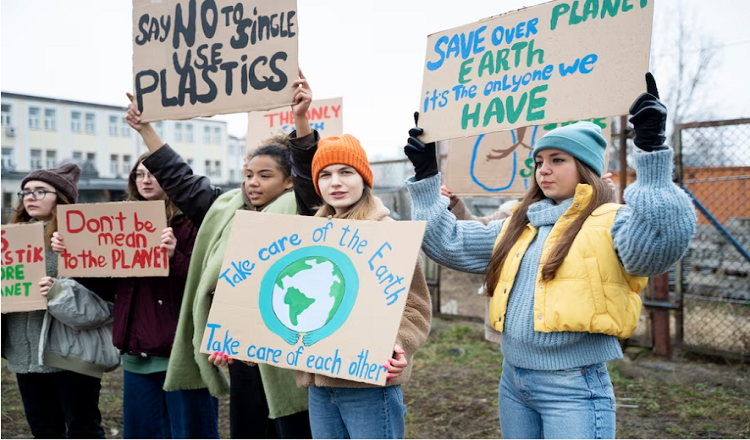The State of Environmental Justice in the US Examining Efforts to Address Disproportionate Environmental Impacts on Low-income and Minority Communities
Welcome to our most recent blog article, in which we’ll examine environmental justice, a crucial topic that has a significant impact on millions of Americans. It’s crucial to consider how environmental policies and practices affect various communities, especially those that are already marginalized, as the globe struggles with the effects of climate change and the need for more sustainable activities.
The condition of environmental justice in the US will be examined in more detail in this article, with a focus on initiatives to mitigate the disproportionate environmental impacts on low-income and minority communities. We’ll begin by defining environmental justice and going over its background in the US. Then, we’ll look at how low-income and minority communities are disproportionately impacted by environmental problems and highlight some of the measures that have been put forth to alleviate these inequities. Last but not least, we’ll talk about the situation of environmental justice in the US right now, including any new advances and ongoing issues that still need to be resolved.
But don’t worry—we won’t bombard you with a ton of boring numbers and facts. This topic will be covered in a lighthearted and conversational manner, making it simple to comprehend. This post is for you if you care about social justice concerns or are just an environmental enthusiast. Let’s start now!
Environmental Justice: What is it?
Environmental justice is the equitable treatment and meaningful participation of all people in the creation, implementation, and enforcement of environmental laws, regulations, and policies, regardless of their race, color, country origin, or level of income. It involves making sure that no community is unjustly subjected to environmental risks or denied access to its benefits.
The civil rights movement of the 1960s in the US is when African American communities in the South first started to protest against the hazardous waste dumps and other environmental concerns that were disproportionately situated in their neighborhoods. The environmental justice movement expanded over time to include other oppressed groups, such as low-income and indigenous people, which also suffered unfairly from the effects of the environment.
The right to a clean, healthy, and sustainable environment, the right to take part in community-affecting decision-making processes, the right to access information about environmental hazards, and the right to seek redress for environmental harms are among the principles of environmental justice. These beliefs are based on the notions that everyone should have equal access to a healthy environment and that environmental protection is a fundamental human right.
Environmental injustice affects marginalized communities
Minority and low-income neighborhoods in the US experience disproportionately negative environmental effects, which can cause a variety of health and social issues. These populations, for instance, are more likely to be exposed to environmental dangers such hazardous waste sites, air and water pollution, and other environmental hazards that might raise the risk of respiratory and other health issues. Inadequate mental and physical health outcomes may result from a lack of access to parks and wholesome dietary options.
Different manifestations of these effects may occur in various US states. For instance, low-income and minority neighborhoods in cities may be close to roads, industrial sites, and other pollution sources. The growth of industrial agriculture in rural regions, with all the pollution and health dangers that comes with it, may have an effect on these communities. Overall, environmental injustice in the US is reflected in the disproportionate environmental effects on low-income and minority populations.
Approaches to Environmental Justice
In the US, efforts to address environmental justice have been underway for many years. These programs cover grassroots advocacy, policy proposals, and studies investigating the disproportionate effects of pollution and environmental deterioration on underserved populations.
Successes in this area include the establishment of community-driven campaigns like the Environmental Justice Movement, the establishment of the Office of Environmental Justice at the Environmental Protection Agency, and the passing of laws like the Civil Rights Act of 1964 and the Clean Air Act of 1970. There have, though, been notable failures as well, such as the persistence of environmental racism and the lack of funding and political will needed to solve environmental injustices.
Environmental Justice in the US Right Now
Environmental justice in the US today is still a complicated problem with many facets. Even if there has been improvement in terms of education and activism, low-income and minority groups continue to be disproportionately affected by environmental injustices. With the formation of an Environmental Justice Office inside the Department of Justice and a White House Environmental Justice Advisory Council, recent developments have included a renewed focus on environmental justice under the Biden administration.
The interconnectedness of environmental justice with problems like climate change and public health has also received more attention. However, difficulties still exist, such as a lack of funding and political will to deal with these problems on a systematic level.
Obtaining Environmental Justice Faces Challenges
Environmental justice cannot be achieved in the US without facing various obstacles. Systemic and structural problems including institutional racism, economic inequality, and political polarization are among these difficulties. Many politically powerless minority groups are therefore excluded from environmental decision-making processes, which feeds the cycle of environmental injustice.
Furthermore, businesses that contribute to environmental pollution and degradation can have substantial political clout and financial means to thwart regulatory initiatives or rehabilitation attempts. Furthermore, these difficulties are partly a result of the uneven distribution of funds and resources for environmental programs and research. In order to achieve environmental justice, it is crucial to address these fundamental problems and bring about systemic change.
Conclusion
Since underprivileged populations continue to be the ones that suffer the most from environmental pollution and deterioration, environmental justice is still a crucial problem in the US. Even while there has been some improvement in the fight against environmental injustice, there are still many obstacles to overcome, including structural problems like institutional racism, economic inequality, and political division.
However, recent events, like the Biden administration’s reinvigorated attention on environmental justice, give reason for optimism about further advancements toward attaining environmental justice. It is essential that we keep putting environmental justice first and seek to bring about systemic change that deals with the root causes that support environmental injustice.
We can work towards a more equitable and sustainable future for everyone by ensuring that all communities have a role in decision-making processes that affect their ecosystems, allocating resources and funding equally, and holding industries accountable for their environmental impact. The protection of our planet’s resources for future generations, as well as public safety and health, are all factors in environmental justice.
Read More You May Like:














Post Comment